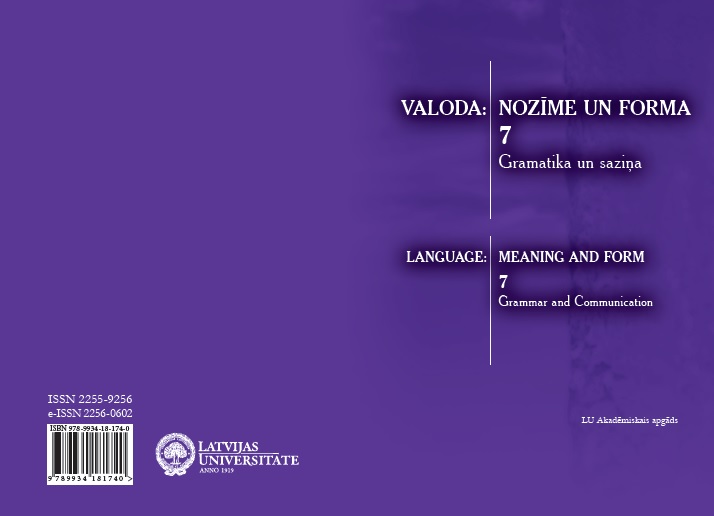Japāņu valodas adnominalizēšanas partikula no (の) un tās atbilsmes latviešu valodā
The Japanese adnominalising particle NO (の) and its correspondences in Latvian
Author(s): Lauma ŠimeSubject(s): Language studies, Language and Literature Studies, Theoretical Linguistics, Comparative Linguistics, Baltic Languages
Published by: Latvijas Universitātes Akadēmiskais apgāds
Keywords: japāņu valoda; partikula; adnominalizēšana; pakārtošana lietvārdam;
Summary/Abstract: The Japanese particle no is multifunctional – it has both communicative and grammatical functions. One of the grammatical functions is adnominalisation. Adnominal is a word or a construction that syntactically depends on the noun, therefore adnominalisation is noun modification. Adjectives and verbs in Japanese are adnominalised without the particle no, but when adnominalising nouns (pure nouns, adjectival nouns, adverbial nouns, verbal nouns and numerals), certain pronouns and adverbs the particle no links the modifier and the modified noun. The particle may indicate affiliation, attributive, equivalence, time, space, semantic subject, semantic object relations or function as a preposition. The particles correspondences in Latvian are to a certain extend determined by the parts of speech of the adnominalisation construction components, therefore the article is organized by the parts of speech that the particle no may follow in a sentence. Among the most frequently occurring correspondences in Latvian are noun case forms, relative pronouns, adverbs functioning as subconjunctions, definite endings of adjectives, prepositions, word-formation morphemes, but often there are no correspondences at all.
Journal: Valoda: nozīme un forma
- Issue Year: 2016
- Issue No: 7
- Page Range: 220-234
- Page Count: 15
- Language: Latvian

